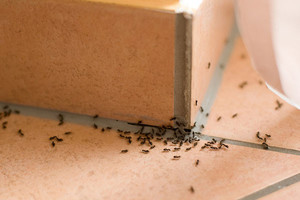Contents:
- Causes and manifestations
- Discharge of the drainage channels
- In the tank there is little water
- Water is standing in the bowl of the toilet
- Damage to the enamel
- Incorrect construction of the sewer system in the private house
- Unsuitable toilet structure
The toilet bowl that does not cope with its duties is a delicate problem,which is rarely voiced, but it does not go away by itself. If it arose, you need to understand: what to do if it flushes the toilet? You need to start by determining why this happens. After all, the methods of elimination will depend on the specific malfunction.
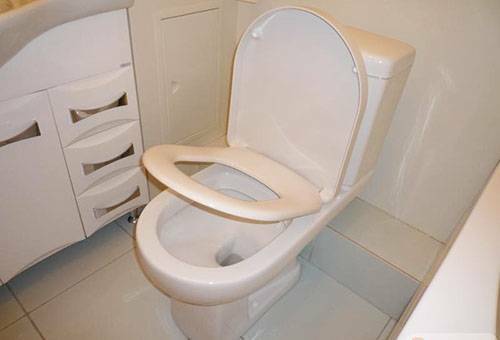
Causes and manifestations of
The source of trouble with the toilet - bad flushing - can be both breakdowns and failure of the bowl or drain system design, and in the private house - also the planning errors of the sewage system. Let us consider in detail what can lead to poor flushing and how it manifests itself.
- Litter in the siphon of the toilet bowl or sewer. In this case, the water will stand in the bowl of the toilet bowl or go very slowly.
- There is not enough water in the tank. When flushing, even visually it can be seen that there is very little water. Sometimes the water flows from the tank without stopping.
- The drainage channels in the tank or toilet bowl are clogged. The water from the tank flows slowly, without pressure.
- The design of the bowl or sink does not allow a good rinse.
- The enamel covering the bowl inside is damaged. It will be seen that the surface has ceased to be smooth.
- If there is no fan riser in a private house, an air stopper is formed in the sewer pipe. At the same time, water can leave slowly and evenly or jerk - it first stands, and after a while it quickly goes away.
Having found out the reason, it is possible to proceed to its elimination. We will analyze what needs to be done in each case.
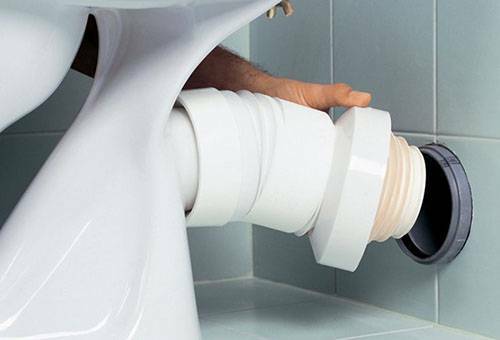
Discharge of the drainage channels
The usual, unprepared water containing mineral salts is poured into the tanks. Over time, they are deposited on the walls of the tank and the working parts. Such growths are called hardness salts or calcareous deposits. Since the drainage holes are of relatively small size, the calcareous deposits can clog them, leaving only a small gap for the passage of water. To get rid of this problem, you need to leave in the tank no more than 1 liter of water and carry out chemical cleaning according to one of the recipes.
- Pour 100 g of a 5-7% solution of orthophosphoric acid into the container and after 10-15 minutes rinse with water.
- Add 0.5 liters of vinegar and borax to the water in the tank. After two hours, rinse with water.
- 3-4 packs of citric acid add to the tank with water and after a few hours wash it off. This procedure is convenient to spend late at night, leaving acid in the tank for the whole night.
It should be noted that the inner surface of the tank can be cleaned up at a time, but for the drain holes and machine parts it will be necessary to repeat the procedure several times. That is why it is not recommended to use stronger products based on oxalic and hydrochloric acid: their repeated use leads to damage to plastic and rubber parts.
Advice
Always wear rubber gloves and protect the respiratory system before handling acids.
For prevention purposes, a coarse filter can be installed at the inlet. If this is impossible for any reason, then there is one more method - tablets for the tank. Their action is based on water softening and cleaning of the entire drainage system. These pills are manufactured by different companies, but any of them are effective.
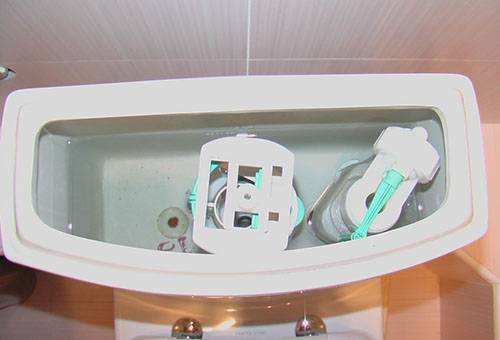
There is little water in the tank
If the toilet is badly flushed as a result of the small amount of water pouring into the tank, the following reasons and ways of their elimination are possible.
- The float closes the valve too early. To fix this, just twist the adjusting screw on the float.
- There is rubbish between the pear and the drain hole, and the water always flows into the toilet bowl. In this case, you need to remove the fittings and clean the drain from debris and plaque.
- Rubber parts over the drain hole have lost plasticity due to hardness salts or chemicals. Here you have to buy the relevant parts and change them.
If the listed actions did not help, most likely, the reason for the breakdown of the mechanism of the tank and here the specialist's help is needed.
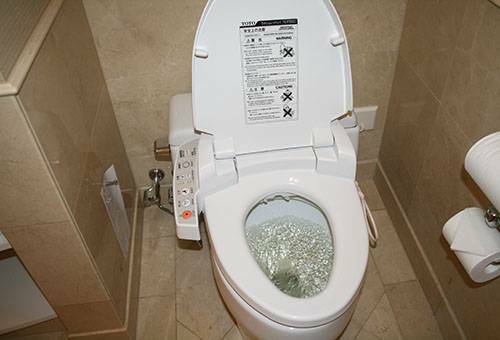
Water is standing in the bowl of the
toilet bowl When the water from the reservoir flows under sufficient pressure, but does not drain into the sewer, the reason is the clogging of the siphon or the drain pipe. In this case, they say: the toilet is clogged. Regardless of where exactly the blockage occurred, the main task is to remove it.
This can be done in several ways:
- using a pneumatic or conventional plunger;
- with a plumbing cable;
- by chemical means: household chemicals, alkali or acid.
Council
The use of household chemicals, such as Mole, prevents deposits on the pipes and is a good prevention.
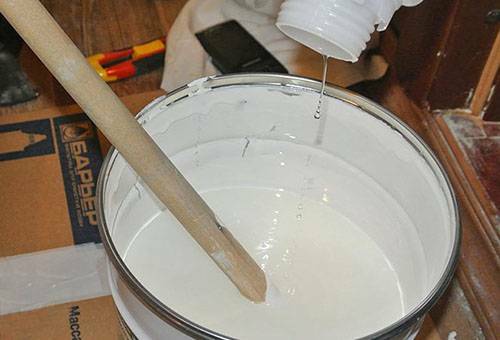
Damage to the enamel
Sometimes it flushes the toilet off badly because the enamel covering the ceramic is scratched. Scales, cracks, roughness delay the waste of life and prevent them from entering the canal with water. In this case, the ideal option is to replace the toilet, but if this is not possible, you can try to make repairs. For repair you will need ceramic filler or waterproof sealant, powder paint and paint spray gun.
Next, you need to do the following:
- Clean and degrease the inner surface of the toilet bowl.
- Strip the fine-grained emery with chips and cracks.
- Apply putty or sealant to problem areas.
- Dry the surface well and dye it.
- Do not use the toilet until the paint is completely dry( 2-3 days).
Council
Painting ceramics at home is not the same as factory enamelling. The new coating is unlikely to last a long time, so carefully calculate whether the restoration is justified or it is better to change the plumbing in the toilet immediately.

Wrong sewer system in a private house
Why does a private house wash a toilet badly, if the same design of a bowl and a tank in an apartment does not cause complaints? Often, when installing a sewer system in a private house, the norms are not observed. This leads to the fact that the water from the toilet goes into the sewer system too slowly, and the products of vital activity are not completely washed away. What should I do in this case? The answer to the question depends on the reason. This may be the wrong pipe slope, the absence of a fan riser or the wrong connection of the toilet to the sewage system.
The absence of a fan riser is a common phenomenon, as are related problems. The pipe is the ventilation for sewer pipes. It allows the accumulated gases to escape from the pipes into the atmosphere. In its absence, an air stopper is formed in the sewage system, which prevents the water from flowing evenly and at the required rate. In addition, the gases still find a way out and "give" the inhabitants of the house fetid exhaust not only from the toilet, but also from the bath or washbasin. In this case, there are two outputs - either a pipe installation with a roof outlet, or the installation of a vacuum valve.
Incorrect slope of the pipe leading to the septic tank or the pipe connecting the toilet bowl and drains can not be corrected. Here it is necessary either to alter the system in accordance with the norms, or to install an electric pump for forced drain.
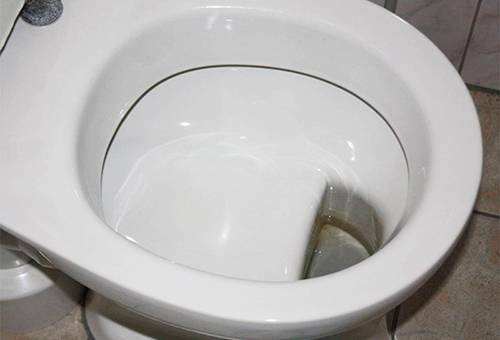
Unsuccessful toilet design
If the new toilet is badly flushed, there may be a reason in its design. A bowl of a toilet bowl with a shelf is an example of an unsuccessful design. Modern models are produced with a funnel-shaped bowl with a drain in the center or with a slope - the drain neck is closer to the edge of the bowl.
Another nuance of the design that affects the quality of flushing is the location of the drain holes. If the hole is one and located in the center, then it is unlikely that it will provide a qualitative flush. It is better to buy a model with a circular flushing system, when water flows from several holes under the rim, washing the entire surface of the bowl.
If the toilet was originally washed off well, then the reason is not in its design. The above information will allow you to understand the source of the problem, and after figuring out - to remove it by removing the clog or adjusting the drain mechanism.


